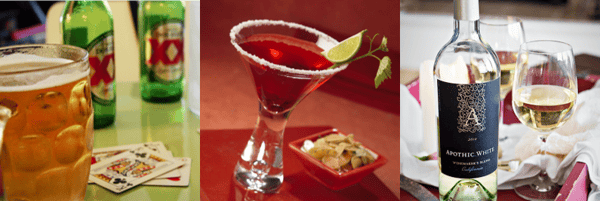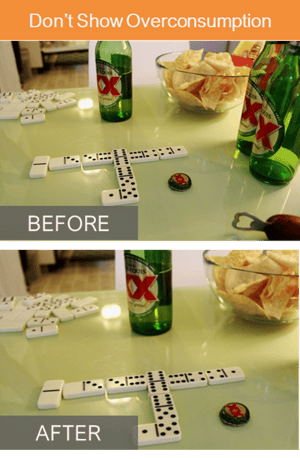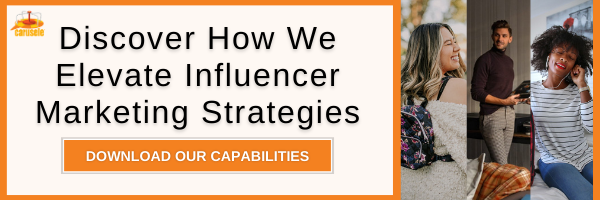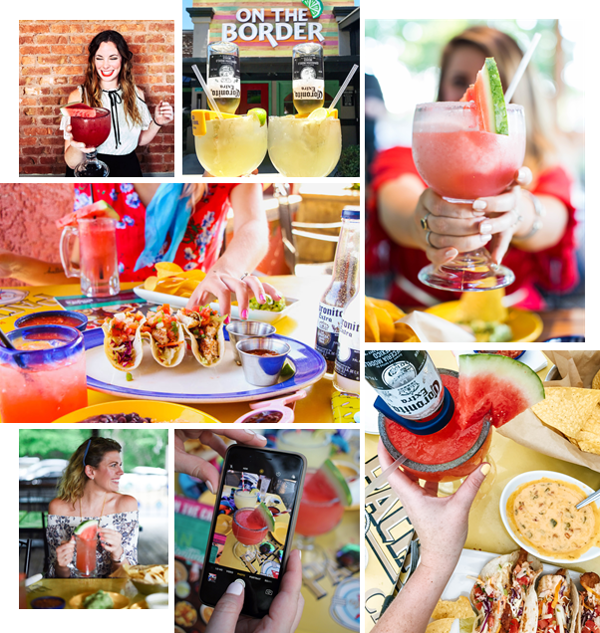Influencer marketing has not only grown in popularity but is growing in spend. An industry that was estimated to be worth $2B in 2017 is now expected to reach $10B by the end of this year. As this growth continues, it's more important than ever for marketers to keep up to date with the latest tactics and trends within their respective industries.
However, when it comes to implementing influencer campaigns for brands in highly regulated industries, such as the alcohol industry, there are many specific precautions that need to be taken to ensure you’re compliant with digital marketing guidelines.
Our influencer marketing agency has run more than 150 influencer campaigns for major brands every year, including alcohol brands. Based on that experience, we’ve taken our learnings and developed this resource to help you understand the specific nuances required to run a successful influencer marketing campaign to promote your alcohol products.
.
The Ultimate Guide to Influencer Marketing for Alcohol Brands

Phase 1: Developing Your Strategy
Every good influencer marketing campaign begins with a solid strategy – a strategy that contains your campaign objectives, approach, target audience, and more. Below are three major areas of your influencer marketing strategy that, as an alcohol brand, require your attention if you’re going to set yourself up for success.
Audience Analysis
Once you’ve determined your target audience, it's essential to understand where they are on social media, what common interests they possess, and what type of content they’re most likely to engage with. From there, you’ll begin to understand which types of influencers you’ll want to partner with to most effectively reach your target demographic.
Setting Metrics
As budgets towards influencer marketing grow, so does scrutiny from senior management. If you want to keep getting funding for your programs, you’ll need to prove how influencer marketing is contributing to ROI, and that starts with the beginning of your campaigns.
We’ve developed a separate White Paper that dives into 25 different ways you can measure influencer marketing. Everything from vanity metrics like impressions and engagements, to purchase indicators like conversion tracking and sales lift is broken down to help you develop campaigns that not only create real, meaningful relationships with your target audience but prove sales attribution.
Digital Marketing Guidelines for Alcohol Brands
We recommend brands apply the applicable industry-directed alcohol marketing guidelines to their influencer campaigns. Below we’ve highlighted many of the common basic principles across each, and for your convenience, here are the full versions of the current Beer, Spirits, and Wine Guidelines.

- Digital marketing communications are intended for adults of legal purchase age.
- Digital marketing communications should be placed only in media where at least 71.6% of the audience is reasonably expected to be of the legal purchase age.
- Digital marketing communications on a site or web page controlled by the brand advertiser that involves direct interaction with a user should require age affirmation by the user prior to full user engagement of that communication to determine that the user is of legal purchase age.
- User-generated content on a site or web page controlled by the brand advertiser must be monitored and moderated on a regular basis.
- Digital marketing communications that are intended to be forwarded by users should include instructions to individuals downloading the content that they should not forward these materials to individuals below the legal purchase age.
- Digital marketing communications on sites controlled by the brand advertiser must respect user privacy.
- Digital marketing communications and product promotions must be transparent as brand marketing by being identified as such.
Phase 2: Identifying Influencers
When it comes to identifying the best influencer to represent your brand, there are many things to keep in mind, especially as an alcohol brand. First, we recommend that you never implement opt-in programs because you’ll lose control of who’s representing your brand. Instead, as we do at Carusele, you should take the time to vet and hand-select creators for your campaigns.
The ABS's of Influencer Selection
At Carusele, we go to great lengths to ensure that we partner with the best influencers to represent our clients. The key is that we never use opt-in programs, but instead carefully vet and hand-select our creators through a process we call the ABC’s of Influencer Selection.
Audience Fit: Is this influencer right for this audience? By using third-party insight data, we’re able to see who an influencer’s audience is, including demographics, location, and interests.
Brand Fit: Is this influencer the right fit for this brand? Leveraging the power of IBM Watson, we identify ideal candidates based on demographics, content themes, performance history, and more.
Content Fit: Will the content be a fit for this campaign? Our influencer specialists personally review all of an influencers channels to determine fit, including voice, tone, look and feel, history with competitors, and authenticity.
If you're also concerned about influencers with fake followers, take a moment to check out our blog post about how to identify fake followers.
Additional Considerations for Alcohol Brands
Use audience data to properly estimate the demographic makeup of the influencers' followers. We only select influencers who appear to have at least 71.6% of their follower base made up of users 25 and older.
Be sure to review each influencers channel content to ensure they do not promote over-consumption (drinking games, binge drinking, getting "drunk", etc.) or showcase illegal actions (drinking and driving, providing alcohol to minors, etc.).
Coaching Influencers

While you may be an expert on alcohol marketing regulations, many influencers are not. To ensure that creators produce and publish content that’s compliant, you may need to train them prior to the campaign launch. At Carusele, we provide all our influencers with a Welcome Packet that includes everything they need to know about a campaign, including a special appendix designed to address alcohol marketing guidelines (see example below). Additionally, it's also important to reinforce standard FTC social media guidelines.
- No one who is or appears to be under the age of 21 can be present in images showing alcoholic beverages. Furthermore, anyone who may be interpreted as a likely consumer of the alcohol in imagery must be and appear to be older than 25.
- Children should not be central to the story you are telling in your post.
- Content should not imply or promote unsafe drinking behavior or over-indulgence:
- No drinking games
- No specifying a certain number of drinks consumed in one sitting or implying any more than one
- No more than one drink per person featured in a photo or video
- No empty bottles or cans shown
- No direct or indirect references to illegal behavior
- Children may not be featured or mentioned in any way within your assignment-related content
- Where possible, the promotion of content should be limited to audiences 25 years of age or older.
Phase 3: Monitoring Content
When it comes to influencer marketing, you can never “set it and forget it” – you need to develop a system to monitor your content on an ongoing basis. And while a tool can be helpful for this portion of a campaign, you can’t rely 100% on this. You’ll still need someone to physically go in and check content accuracy and compliance. Additionally, it’s also important to develop a process for identifying the top-performing content, in real-time, during the campaign. This comes into play in the next phase of the campaign, the amplification plan, which helps you further the reach of your campaign.
The Content Performance Index (cstack)
In 2018 we rolled out a proprietary algorithm that evaluates every individual piece of influencer-produced content based on impressions, engagements, clicks, etc., then compares the content against one another to determine top-performing content. This includes a manual check of each piece of content to ensure it matches our criteria and is on-brand.
While you may not have this exact process, it’s still important to monitor your content in real-time to see how each piece performs and to identify those pieces that are generating the best results.
Phase 4: Amplification Plan
Now that your content is live and you’ve had the opportunity to identify top-performing content, it’s beneficial to share that content through paid tactics designed to reach highly targeted audiences outside of the influencer's organic following. Below we’ve outlined three specific tactics you can easily implement for maximum results.
Syndication Influencers
Utilize additional influencer partners to simply share top-performing content across their most influential social media networks. This way, you’re able to leverage the reach and credibility they’ve built with their audiences in a highly efficient and effective way.

Boosted Social Posts
Expand the reach of your content by targeting audiences that don’t follow your core influencers through social media boosting of top content.
Take note though, there are three ways to accomplish this. You can either (1) allow the influencer to boost their content on your behalf, or (2) use the handshake tool and boost after the influencer has tagged your brand or (3) have the influencer give administrative access to their ads manager account so that you can control the boosting (FB/Instagram only).
Engagement Activations
Engagement activations hosted by influencers incentivize user-generated content, discussions, and sharing by target audiences, further spreading campaign messages. Additionally, they’re a great way to generate high volumes of activity designed to deliver on a specific campaign goal. Below are six different types of activations that you can easily implement.
- Sweepstakes & Contests
- Live Chats
- Power “Hours”
- Social Takeovers
- Surprise & Delights
- Limited Time Offers
Phase 5: Post Campaign
Just because the campaign has ended doesn’t mean the campaign content can’t live on. You now have a library of high-quality, on-brand, pre-tested and proven assets, available for use. Take advantage of that and re-purpose your top-performing content or UGC content on brand-owned channels or across other marketing materials such as billboards, ads, magazines, email, and more. You may only do this, however, if you have secured the rights to whatever content (both influencer and UGC) you wish to begin repurposing.

Campaign Example: On The Border Restaurants
One of the many aspects of On The Border (OTB) is that each location has a beautiful outdoor patio. As the summer season approached, we partnered with influential content creators to help drive foot traffic and sales of select signature cocktails. Creators began by visiting different OTB patios to enjoy and capture the complete #PatioVida experience and generate visual social stories. They then supported their content through blog posts, social shares, and highly targeted media syndication of the brand’s customer demographic. Check out the results for On The Border here.
Next Steps
Did you enjoy this guide? Feel free to instantly download the PDF version of using the button below.
And don’t feel overwhelmed by these guidelines! Our team at Carusele is happy to help you design an influencer marketing strategy to effectively reach your audience. Just contact us using the form below.
-1.png?width=504&height=360&name=Carusele%20logo%20%C2%AE%20logo%20Color%20(2)-1.png)
.png?width=728&name=Blog%20Ads%20(4).png)


